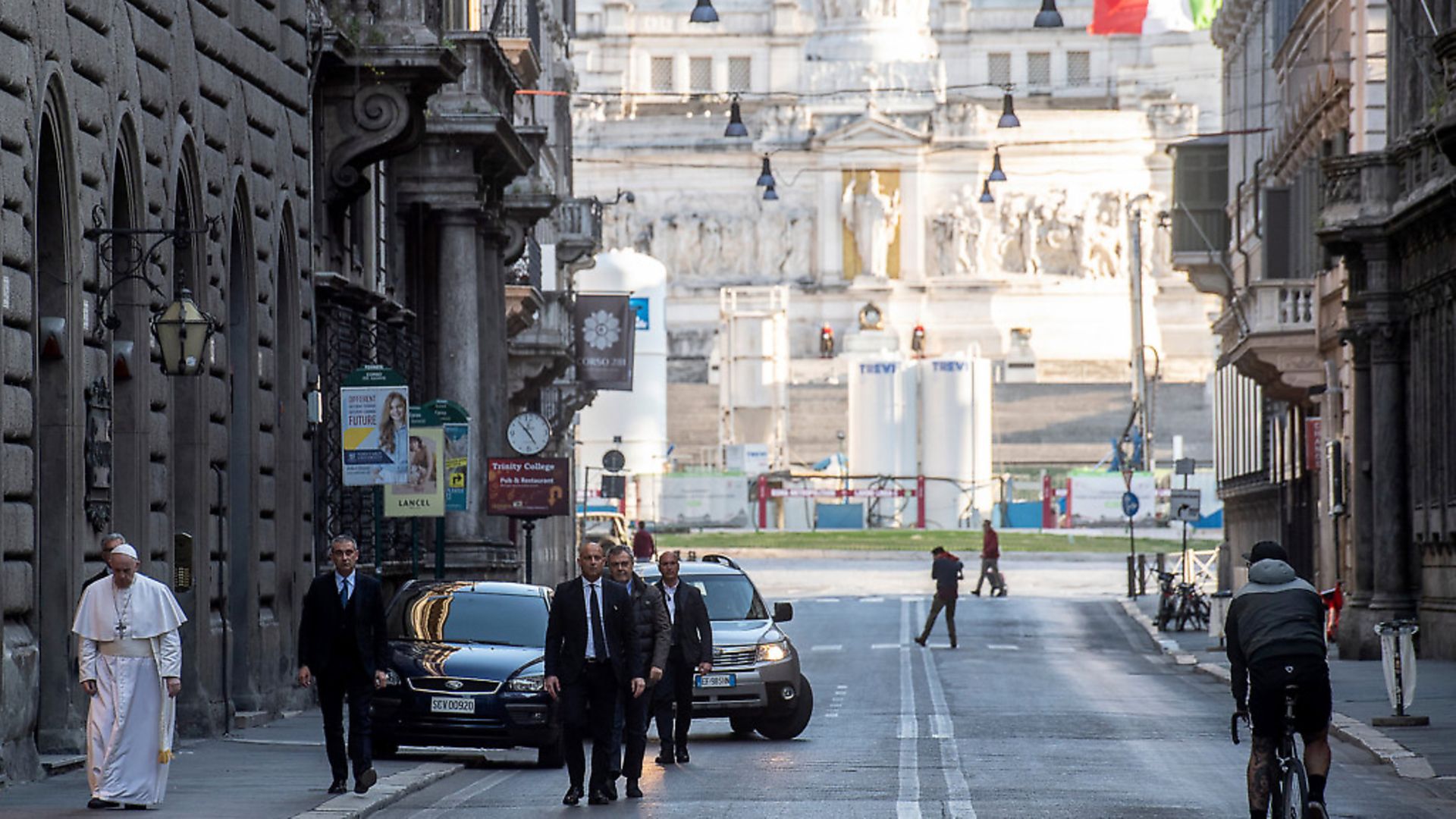
BONNIE GREER writes how the central ‘beautiful figure’ of Italian culture cannot be seperated from the tragedy facing Italians
Anyone who has been to Italy or known Italians will recognise la bella figura. The term literally means ‘beautiful figure’ and expresses a central part of the country’s culture, a basic part of who its people are and how they present themselves. La bella figura is about presentation, creating a good impression, and showing a respect for beauty.
You must dress appropriately in Italy at all times, so you would never see an Italian student slacker, for example. They try, but they don’t really exist. And an older Italian woman dresses in what might be called ‘age appropriate’ clothing. She is always presentable in public. Everything is ‘done’.
You see it everywhere. I saw it on TV recently, with a clip of a Sicilian mayor walking the streets of his town during the current lockdown to make sure it was being observed. The footage shows him yelling at a door asking the woman inside why she needs her hairdresser to drop by. Of course, he knows the answer to this question.
Even he too, in his distress, demonstrates the concept of bella figura. He is dressed in a pristine white shirt, black trousers and tie. And black shoes shined to such a buff that you could see your face in them. They catch the sun briefly as he turns toward the camera. This is Italy.
Have your say
Send your letters for publication to The New European by emailing letters@theneweuropean.co.uk and pick up an edition each Thursday for more comment and analysis. Find your nearest stockist here or subscribe to a print or digital edition for just £13. You can also join our readers' Facebook group to keep the discussion and debate going with thousands of fellow pro-Europeans.
An Italian man will tell a woman – a complete stranger – that she is beautiful if he thinks so. This is not a pick-up. Simply the way he lives. You have to yell if you do not want to be bothered, and they retreat. But these things are now becoming less and less because women are standing up.
Nevertheless everyone in Italy tries to look good. And make the things around them look good. Italians also love their families. It is not a cliché about the way they feel about their mothers especially. When walking around the markets, you can see grown men deferring to their mothers. No macho there.
It has been very difficult being a person of colour in Italy lately. Especially in the north. But even when people look at you aggressively, they still understand that you may know something about wine, meat, cheese. If they know you, they hug you. They kiss you.
And so what has happened in Italy –what is happening in Italy – is an especially tragic thing.
People are dying without family; dying without regard to la bella figura. They are lying in anonymous hospital beds, alone and often old, killed by their own lungs trying to fight off an invader.
The culture of la bella figura leads the world to believe that Italy is young. Italy is old. Italians live long because they know how to live; how to love. They eat and drink as well as their circumstances allow. They do not understand those who do not. They choose life.
Italy is the fifth oldest country in the world. The average age of an Italian man is 44.4 years: for a woman it’s 46.5. The oldest country in the world, Monaco, is just over the border to the west.
What is known as the ‘human replacement rate’ is very low in Italy. People in their mid-forties are usually not first time parents.
Yet the country projects youth because that is la bella figura. The death rate from Covid-19 is high because Italians are old. Age is a risk factor for this virus. For Italy, this is especially tragic.
America is not only Irish. It is Italian. New York City, especially, is Italian. When I lived there in the 1980s, ‘Little Italy’ still existed. You could eat at restaurants late into the night where you might see Al Pacino or De Niro arguing with friends over a plate of spaghetti. Italians argue a lot.
Bill de Blasio, the mayor of New York City – the area of the US worst hit by this virus – is Italian. The governor of the state Andrew Cuomo – who has become a global media star because of his daily in-your-face briefings regarding the coronavirus – is Italian. He has live TV shouting matches with his little brother, the CNN anchor Chris Cuomo (who now has Covid-19). They end up attempting to outdo one another in expressions of brotherly affection. This, too, is Italian.
The chief doctor dealing on a national level with the pandemic in the US, Anthony Fauci, is Italian. He tells the American people like it is.
This combination of the need for beauty and also straight-talking and to have to tell a family that their elder, their loved one, must die alone is impossible to contemplate.
The figure of Pope Francis walking down a normally busy street in Rome, on his way to a church where a cross is displayed in honour of a saint who saved the city from a plague in the 17th century, has to be a symbol of what Italy must feel now. As is the serenading from balconies, and the applause for care workers.
The plague has been so much a part of Italian history, so woven into the fabric of its being. The pandemic known as the Black Death – another zoonotic infection like the coronavirus, that is, it crosses species – came into Europe through Genoa.
The Italians became fascinated with death and they also came to believe that perhaps there may not be a God up there. Or at least an all benevolent one. The ‘dance of death’ became a key motif in their art. Along with the need for pleasure.
It might be said that this contradiction created the Renaissance, as exemplified in the writings of Boccaccio and Petrarch. Giotto and Botticelli began to paint human beings.
The beautiful church left behind in the ‘white flight’ as we African Americans began to leave our ghettos and buy houses in Chicago in the late 1950s and early 1960s was Italian. Italian baroque. It was my first art book; my first paintings; my first museum. Italian to its core; its ornate altar real gold woven through it; the bleeding heart of Christ, part of a statue that loomed near the altar, the utter glory of it all made me quite angry when Vatican Two – the Second Vatican Council, in 1965 –decreed that all had to be toned down. An Italian church is religion itself.
When I lived in New York City, I went to the Metropolitan Museum of Art when I could. Hanging there is a 1624 painting by Anthony van Dyck – Saint Rosalie Interceding for the Plague-Stricken of Palermo. Images of the saint, who died in the 12th century, became the rage after her remains were found during the epidemic. And van Dyck makes her not a typical exalted being, but an ecstatic beauty. Even in the midst of a pandemic, he found his bella figura.
And then there is signora Italica Grondona, who was born in 1917 and lived through the so-called Spanish Flu pandemic, who has just been released from hospital in Genoa having recovered from Covid-19. She is bella figura.










